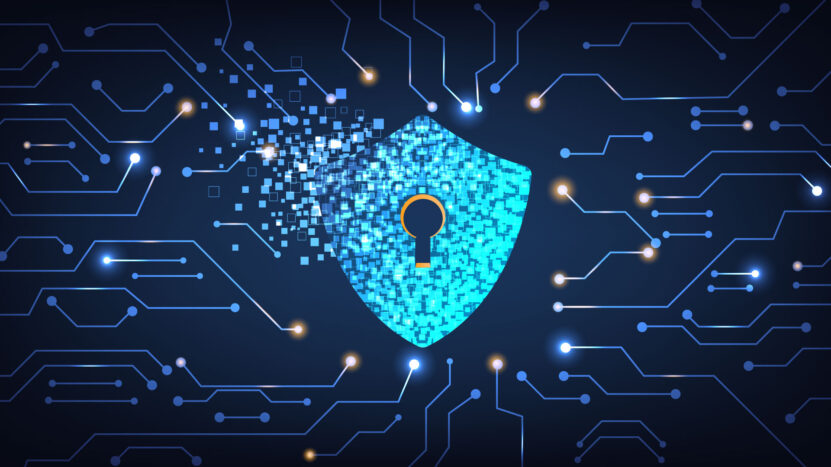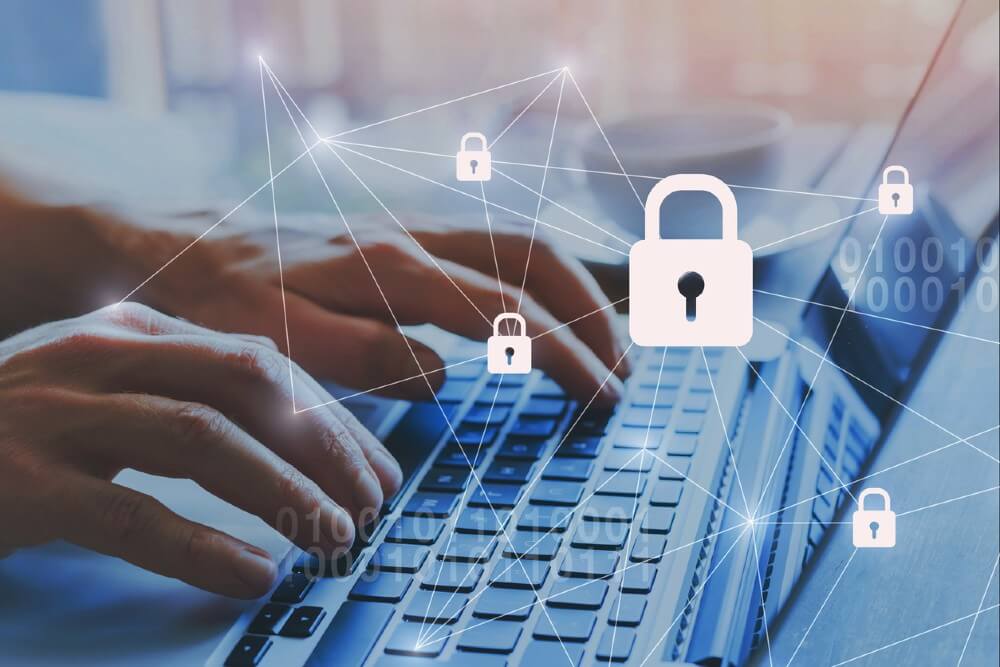Cybersecurity today is not just a buzzword but a necessity for individuals and organisations. With cyber threats matching today’s technologies in sophistication and frequency, the need for robust cybersecurity measures has never been more pressing.
But how does one know they need cybersecurity solutions, or the solutions and providers to go for? This comprehensive guide aims to assist individuals and businesses in navigating the intricate landscape of cybersecurity, providing a thorough understanding to streamline their IT security processes.
Let’s begin.
Part 1: Understanding the Cybersecurity Landscape

The Rising Tide of Cyber Threats
Cyber threats are no longer just the concern of large corporations or governmental organisations. Small businesses, non-profits, and even individuals are increasingly targeted today. Successful threat actors cost corporations billions and trillions of dollars yearly, not to mention the irrevocable damage to the business’s reputation due to operational downtime and possible intellectual property theft. For this reason, an impenetrable cybersecurity posture is imperative for all modern businesses today. However, before developing such a defence strategy, you’ll need to understand the variety and evolution of cyber threats.
Let’s begin with the types of cyber threats.
Types of Cyber Threats
The most common types of cyber threats include:
- Malware: This encompasses harmful software like viruses, worms, and ransomware used for system disruption, information theft, or unauthorised network access.
- Phishing Attacks trick individuals into revealing sensitive information, often via email, as seen in the 2016 Democratic National Committee email leak.
- Man-in-the-middle (MitM) Attacks intercept communications, exemplified by Gate.io’s 2019 cryptocurrency transaction redirection.
- Denial-of-Service (DoS) and Distributed Denial-of-Service (DDoS) Attacks overload networks with traffic, like the 2016 attack on DNS provider Dyn.
- SQL Injection Attacks insert malicious code into SQL servers, manipulating databases; LinkedIn’s 2012 password leak is a notable instance of this.
- Zero-Day Exploit refers to exploiting software vulnerabilities discovered on the same day, impacting programs, data, or networks.
- DNS Tunnelling uses DNS for non-DNS traffic, often in cyberattacks for data exfiltration or control.
- Ransomware encrypts files and demands a ransom for access restoration, as demonstrated by the 2017 WannaCry attack.
- Cross-site scripting (XSS) involves injecting malicious scripts into trusted websites, bypassing security measures.
- Credential Stuffing uses stolen credentials for unauthorised account access.
- Cryptojacking involves the unauthorised mining of cryptocurrency on others’ computers, as happened to Tesla in 2018.
- Internal Threats involve organisation members misusing their access.
- Advanced Persistent Threats (APTs) are prolonged, stealthy cyberattacks aiming at data theft, such as the 2020 SolarWinds cyberattack affecting U.S. government agencies and corporations.
Each of these handful of attacks is unique, and so they require specific strategies for their prevention and response. This is where cybersecurity experts like Microminder come in. Because the threat and vulnerability landscape is broad, we’ll design robust measures to fortify all end points of your digital infrastructure.
But first, how does one know the cybersecurity solutions one’s company needs? A quick security audit conducted by Microminder’s finest cybersecurity professionals should reveal the potential risks and vulnerabilities embedded in your company’s network environment.
This brings us to the second part of this guide.
Part 2: Assessing Your Cybersecurity Needs

Determining your organisation’s cybersecurity needs can be done in a few easy steps:
Step 1: Conducting a Cyber Risk Assessment
Start with a thorough risk assessment. Here, we’ll identify and prioritise your business assets by highlighting the data or systems that are most critical to your business and the associated threats they may face.
Step 2: Determine Potential Threats and Vulnerabilities
Unprotected networks are prone to vulnerabilities that threat actors would enjoy exploiting. Vulnerability managers from Microminder will scour the ends of your digital infrastructure to highlight and assess any weakness in your current security posture. To reveal the depths of the weakness, we’ll go ahead and simulate an attack just to help you gauge the consequences of a security breach on your digital assets. This will put things in perspective for your organisation.
Step 3: Understand Your Legal and Compliance Obligations
As a modern-day business owner, CSO or CTO, it’s imperative to familiarise yourself with relevant cybersecurity laws and regulations. This is because non-compliance can lead to significant legal and financial repercussions. Micromider CS can handle all your cybersecurity compliance needs. We’re certified and accredited to ensure your organisation is compliant with industry laws and metrics.
Part 3: Key Cybersecurity Solutions and Their Importance

Some of the popular cybersecurity solutions can be grouped under:
- Antivirus and Anti-Malware Software, which includes everything from heuristic analysis to sandboxing and cloud-based threat intelligence.
- Firewalls act as barriers between secure internal networks and untrusted external ones and control network traffic based on security rules. Firewalls could come in the form of packet filtering, stateful inspection, next-generation firewalls, and others.
- Encryption Tools are an important component of data-centric security used to protect sensitive data by encoding it, ensuring access only to authorised parties. These tools can be symmetric or asymmetric encryption, depending on the vulnerability.
- Identity and Access Management (IAM) controls user access to resources, reducing the risk of unauthorised access. It includes the roles of single sign-on (SSO), multi-factor authentication (MFA), and role-based access control (RBAC).
- Security Information and Event Management (SIEM) solutions offer real-time analysis of security alerts, aiding in swift incident response. SIEM tools collect, analyse, and report on security data from different sources. They demonstrate efficacy in identifying and responding to threats.
- Endpoint Protection involves monitoring and analysing endpoints, like computers and mobile devices, for signs of malicious activity to identify and counteract cyber threats.
Microminder CS offers businesses a holistic cybersecurity approach featuring these key solutions and many others. These solutions are, however, tailored to the unique landscape of each company’s digital environment, regardless of the industry.
Our cybersecurity offering covers:
- Managed Detection and Response (MDR) Services
- SOC as a Service (SOCaaS)
- Vulnerability Management Services
- Unified Security Management (USM) Services
- Managed Endpoint Detection and Response (EDR)
- Managed Network Detection and Response (NDR)
- User and Entity Behavior Analytics (UEBA)
- Managed SIEM and SOAR Services
- Threat Intelligence and Hunting Services
- Mitre Attack Framework Coverage
- Custom Reporting for Compliance
- Digital Forensics & Incident Response (DFIR)
- Insider Threat and Behavioural Monitoring Services
- Cloud Security Posture Management (CSPM)
- Cyber Security as a Service
- File Integrity Monitoring and Malware Analysis
- DevSecOps as a Service
- Security Orchestration and Automation Services
- Extended Detection and Response (XDR) Services
Hence, if it’s a cybersecurity solution you need, Microminder not only offers it but has the best professionals for its deployment.
Part 4: Selecting a Provider
Your business’s security and continuity depend on the provider you choose, so selecting a cybersecurity solutions provider is a critical decision that shouldn’t be made without research and fact-checking. To make the right decision, you’ll need a checklist featuring your requirements and expectations of a cybersecurity provider. You’ll gauge all providers by this list.
Cybersecurity provider checklist

For the most secure digital infrastructure, here’s a list of qualities you should seek in a cybersecurity company. However, it’s important to note that Microminder CS satisfies these standards and offers world-class security solutions for digital infrastructures.
- Comprehensive Security Offerings
Evaluate the range of security solutions offered by the vendor, ensuring they cover critical areas like endpoint protection, network security, cloud security, and identity management.
- Industry Reputation and Experience
Consider the vendor’s reputation and track record in the cybersecurity industry. Look for vendors with demonstrated experience and a history of successfully protecting against cyber threats.
- Compatibility with Existing Systems
The vendor’s solutions should be compatible with your organisation’s existing IT infrastructure to ensure seamless integration and operation. It should also integrate well with other security tools and systems you might be using, enhancing the overall security infrastructure.
- Scalability and Flexibility
Choose a vendor that offers scalable solutions that can grow with your organisation and be flexible enough to adapt to changing security needs.
- Compliance and Regulatory Standards

Ensure that the vendor’s solutions comply with relevant industry regulations and standards, like GDPR, HIPAA, or PCI DSS, depending on your organisation’s specific requirements.
- Customer Support and Service
Good customer support is crucial, especially in cybersecurity. Look for vendors with a strong track record of customer service, including reliable technical support and prompt response times.
- Cost-Effectiveness
While cost shouldn’t be the only factor, it’s important to consider the total cost of ownership (TCO), including initial investment, maintenance, and any additional costs for updates or support.
- User-Friendly Interface
The solutions should have a user-friendly interface, making it easier for your team to manage and monitor security protocols effectively.
- Innovation and Future-Proofing
Choose a vendor that invests in research and development to stay ahead of emerging cybersecurity threats and technologies.
- Peer Reviews and Testimonials
Look at reviews and testimonials from other organisations that have used the vendor’s services to gauge their satisfaction and the effectiveness of the solutions.
- Security Analytics and Reporting
The ability to generate insightful security reports and analytics is vital for understanding your security posture and making informed decisions.
Conclusion
Implementing effective cybersecurity solutions is not a one-time event but an ongoing process. It requires a strategic approach, encompassing risk assessment, choosing the right tools, provider selection, implementation, continuous monitoring, and fostering a culture of cybersecurity awareness. By following this comprehensive guide, individuals and organisations can significantly enhance their defence against the ever-evolving landscape of cyber threats.

